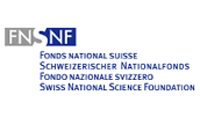Graphene nanoflakes: a new tool for precision medicine

Usually, a drug is administered indiscriminately and most of it does not reach the diseased tissues. The goal of precision medicine is to increase the efficacy of therapeutic substances by delivering them only to the proper target. This requires a customised drug delivery system.
A team funded by the Swiss National Science Foundation has developed a new approach based on graphene nanoflakes, which are extremely small pieces of graphene (a regular atomic-thin arrangement of carbon atoms). They added different types of molecules to single nanoflakes to transform them into a customised system for drug delivery. The results are published Chemical Science.(*)
Like Lego bricks
Jason Holland’s team at the University of Zurich succeeded in attaching four kinds of molecules to single graphene nanoflakes to imbue them with specific capacities: transporting an anticancer drug, delivering it only to certain cancerous cells, making it visible by medical imaging and prolonging its stay in the bloodstream. In a second step, the team tested each functionality to verify that the new compound works as expected.
“Our work demonstrates how to use the graphene nanoflakes as a universal delivery mechanism,” explains PhD student Jennifer Lamb, first author of the publication.”They can be used as a scaffold onto which one can add customised components, a bit like Lego bricks. This is possible because of their chemical structure: the edge of the flake is made of carboxyl groups – CO2H – where additional molecules can be attached.”
New compounds against cancer
First, collaborators at University College London produced the graphene nanoflakes from carbon nanotubes. Then the Zurich team attached four molecules to single flakes. The first molecule, ispinesib, is a drug currently in development that halts mitosis (cell division) and thereby prevents the growth of tumours. The second molecule is a peptide that binds to prostate-specific membrane antigens (PSMAs), which are overexpressed in prostate cancer cells.
The third molecule (DFO) is a cage-like molecule that efficiently catches radioactive gallium, an isotope routinely used in PET (positron-emission tomography) scanning. This standard medical imaging technique helps first in diagnosing prostate cancer and then in ensuring that the compound is delivered to the diseased tissues. Finally, the researchers caused the compound to interact with albumin in the blood; this prevents its rapid filtering by the kidney and increases the time it stays in circulation.
In a second step, the team tested the new compound. Studies performed on cultures of prostate cancer cells showed that their division and growth were indeed halted. In live mice, PET imaging showed that the compound accumulates in diseased tissues, but not for long enough, says Lamb:”Because of their small size, the constructs are still excreted too rapidly for a sustained therapeutic effect. But our experiments showed ways to influence drug excretion by changing the structure of the graphene.”
The team is now experimenting with other combinations involving antibodies instead of small peptides: the antibodies bind better to cancer cells, and their larger size should cause them to remain longer in the bloodstream.
“Our research is fundamental, and much more work will be needed to develop a new drug,” says project leader Jason Holland.”But our results do open promising new avenues for oncological precision treatment as well as for theranostics. This combination of therapeutic agents and diagnostic tools can help ensure that the treatment is appropriate for the disease, and for the patient.”
This work is being carried out at the University of Zurich and at University College London (UK). It is financed by the Swiss National Science Foundation, the Swiss Cancer League, the European Union’s Horizon 2020 Research and Innovation programme and the Royal Society.
The text of this press release and further information are available on the website of the Swiss National Science Foundation.
Jason P. Holland (SNSF Professorship)
Department of Chemistry
University of Zurich
Winterthurerstrasse 190
CH-8057 Zurich
Phone: +41 44 635 39 90
E-Mail: jason.holland@chem.uzh.ch
Website: www.hollandlab.org
(*) J. Lamb, E. Fischer, M. Rosillo-Lopez, C.G. Salzmann et J.P. Holland: Multi-functionalised graphene nanoflakes as tumour-targeting theranostic drug-delivery vehicles. Chemical Science (2019). DOI: 10.1039/C9SC03736E:
https://pubs.rsc.org/en/content/articlelanding/2019/sc/c9sc03736e#!divAbstract
http://www.snf.ch/en/researchinFocus/newsroom/Pages/news-190819-press-release-a-…
Media Contact
All latest news from the category: Health and Medicine
This subject area encompasses research and studies in the field of human medicine.
Among the wide-ranging list of topics covered here are anesthesiology, anatomy, surgery, human genetics, hygiene and environmental medicine, internal medicine, neurology, pharmacology, physiology, urology and dental medicine.
Newest articles

First-of-its-kind study uses remote sensing to monitor plastic debris in rivers and lakes
Remote sensing creates a cost-effective solution to monitoring plastic pollution. A first-of-its-kind study from researchers at the University of Minnesota Twin Cities shows how remote sensing can help monitor and…

Laser-based artificial neuron mimics nerve cell functions at lightning speed
With a processing speed a billion times faster than nature, chip-based laser neuron could help advance AI tasks such as pattern recognition and sequence prediction. Researchers have developed a laser-based…

Optimising the processing of plastic waste
Just one look in the yellow bin reveals a colourful jumble of different types of plastic. However, the purer and more uniform plastic waste is, the easier it is to…



